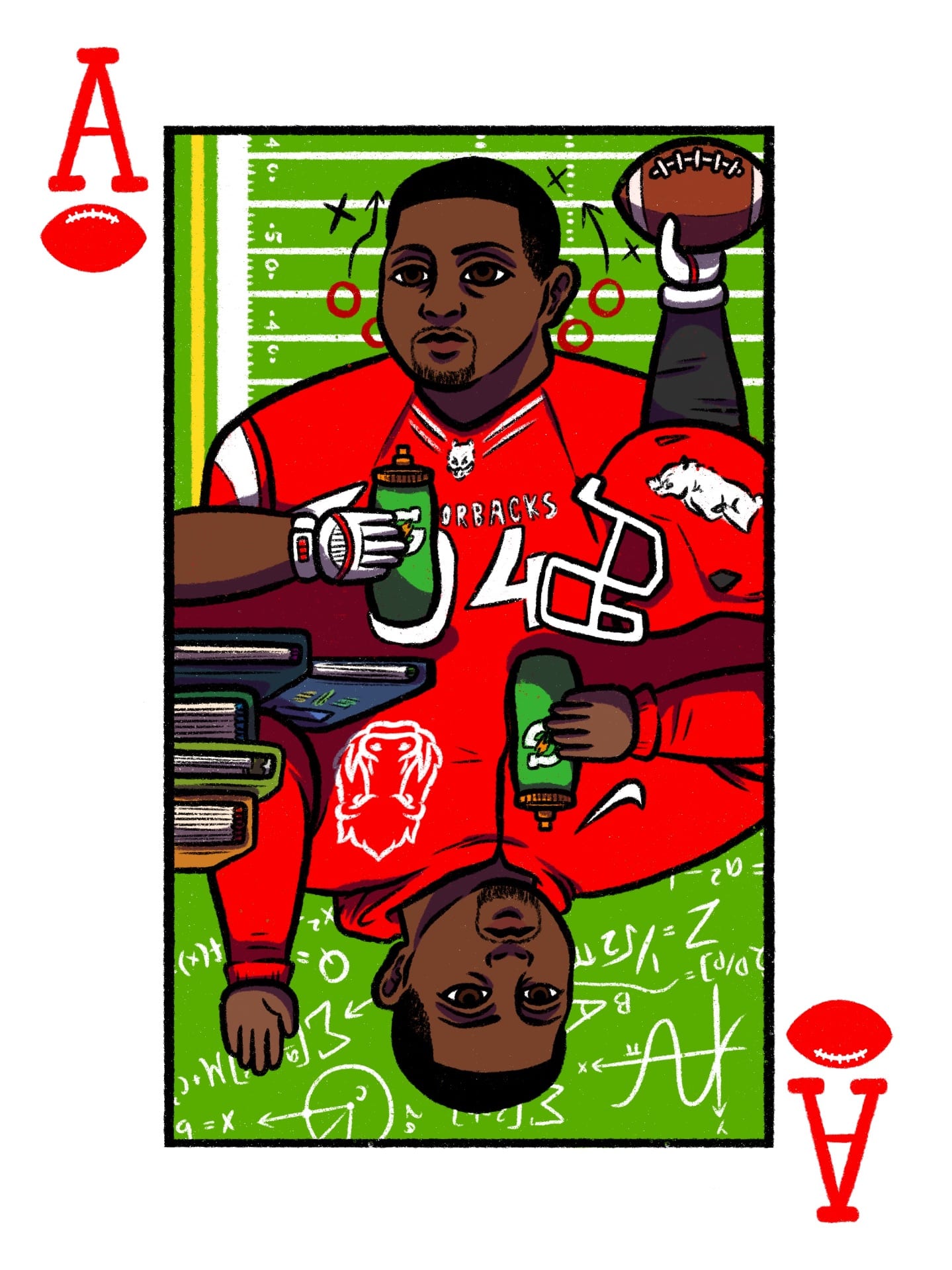A peek into the life of a former Razorback football player
By Halie Brown
April 11, 2019

Illustration by Raleigh Anderson
When Taiwan Johnson played Razorback football, he often woke up before sunrise. He went to practice at 6 a.m., worked out until he had to leave for class, and then he returned to the training facility at noon.
“There were days on end where it just felt like it was facility and nothing else,” Johnson said about spending most of his day at the student-athlete center. “It can drive you crazy.”
Johnson played as a redshirt in 2012 and defensive lineman from 2013-16. College football prepared him for life in the real world. It takes a very mentally strong person to balance student life and athletics, Johnson said. But sometimes, he felt overworked.
“You’re never done,” Johnson said. “You’re done with practice? Well, time to go study. It just felt like at times there was always something.”
Johnson was compensated in scholarships. The average fair market value of a UA football player, or how much money that player is worth considering the revenue football brings in, is $354,266, according to a 2017 report by Business Insider using information from the Department of Education.
The discussion to pay college athletes has two sides, said Charles Small, the former director of UA student-athlete development. Some argue that student athletes who generate revenue for the athletic department and university should receive a salary. Others say they are getting the value of an education.
Johnson sometimes went home at 9 or 10 p.m. and still had studying left to do, but he had to get some rest. Football felt like a full-time job, with 12-14 hour shifts in 90- or 100-degree heat. He had little time to himself. When he did have time to himself, he would curl up in bed and watch a show on Netflix, he said. In the morning, he started all over again.